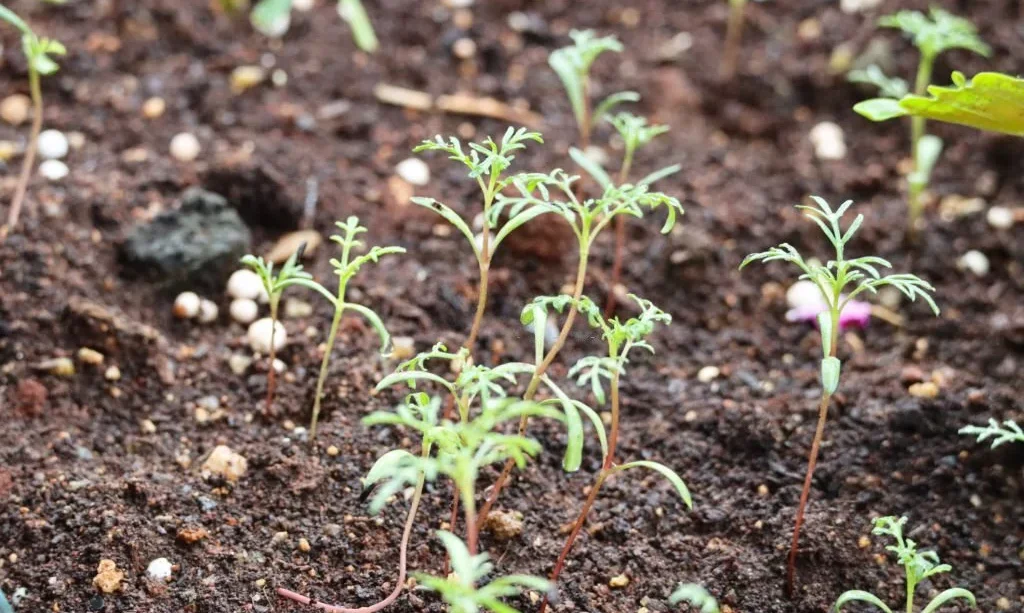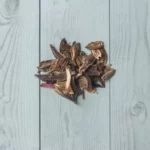If you’re someone who dreams of a vibrant, colorful garden filled with butterflies, then you’re in for a treat. Today, we’re talking about cosmos, one of the most striking and easy-to-grow flowers you can add to your garden. Even more fascinating is the journey these flowers take, starting from their modest beginnings as tiny seeds. But what do cosmos seeds look like, and how can you grow them in your garden? That’s exactly what we’ll uncover in this article.
- Growth: Cosmos are fast-growing annuals, blooming from mid-summer until frost. They can reach heights of 3 to 6 feet, depending on the variety and growing conditions.
- Habitat: Cosmos bipinnatus and Cosmos sulphureus thrive in sunny spots with well-drained soil. They’re drought-tolerant once established, making them ideal for xeriscaping.
- Ecology: Cosmos attract pollinators like bees, butterflies, and birds, enhancing biodiversity in gardens. They also serve as host plants for certain butterfly larvae.
- Cultivation: Easy to grow from seeds sown directly into the garden after the last frost, they require minimal care. Deadheading can encourage more blooms, but many gardeners leave the spent flowers for birds to feed on the seeds.
- Quality: All Cosmos seeds packaged by Seed Needs are intended for the current and the following growing seasons. All seeds are stored in a temperature controlled facility that is free of significant amounts of moisture.
What Are Cosmos?
Cosmos are like the fireworks of your garden, bursting with colors and energy. Hailing from the wild meadows of Mexico, they have made their way into gardeners’ hearts worldwide. These starry-shaped flowers come in a vibrant palette of colors, including white, pink, red, yellow, and orange, adding a dose of cheer to any garden.
There are mainly two types of cosmos that are garden favorites – Cosmos sulphureus, which has fiery orange and yellow blooms, and Cosmos bipinnatus, known for its delicate, feathery foliage and pastel-colored flowers.
But cosmos aren’t just a pretty face! These flowers are also loved by pollinators like bees and butterflies, making your garden a tiny ecosystem. So by planting cosmos, you’re not just beautifying your garden, but you’re also helping the local fauna. Now, isn’t that amazing? Let’s dig deeper and find out more about the seeds that give rise to these beautiful flowers.
What Do Cosmos Seeds Look Like?
Cosmos seeds are a little treasure chest that holds the future potential of a vibrant, dazzling flower. But what do these magical tiny things look like? Well, cosmos seeds are surprisingly unique in appearance. They are elongated, with a size that ranges from 1/8 to 1/4 inch long. They boast a deep, rich brown color, somewhat like a tiny piece of dark chocolate.
One of the most distinctive features of cosmos seeds is their texture. They are covered in short, bristly hairs, giving them a rough touch. If you look closely, you’d notice they have a slightly curved, asymmetrical shape, almost like a tiny, whimsical crescent moon.
The Lifecycle of a Cosmos Plant from Seed
Now that we know what the cosmos seeds look like, let’s follow them on their exciting journey from being a seed to becoming a gorgeous flower.
It all begins with the seed being planted in the soil. With the right conditions of warmth and moisture, the seed germinates, usually within 7-14 days. This is when the first tiny leaves, called cotyledons, emerge above the ground, marking the beginning of a new cosmos plant.
As days turn into weeks, the seedling grows, developing more leaves and getting stronger. After about 4-6 weeks, the plant is usually ready to produce buds. This is an exciting time because you’re about to see the first signs of the flower your cosmos plant will become!
The buds open up into flowers in another week or so, marking the start of the blooming period. A healthy cosmos plant can keep producing flowers for several weeks, sometimes even until the first frost.
After the blooming period, the plant starts to produce seeds, and the lifecycle continues. From a tiny, bristly seed to a vibrant, blooming flower, the journey of a cosmos plant is truly a wonder of nature!
- Not only are cosmos plants helpful to butterflies and bees, but they are also beautiful plants with showy flowers
- Cosmos likes light plants, likes light, tolerates poor soil, avoids heat, and avoids stagnant water
- The seeds of cosmos have self-seeding ability. Once planted, a large number of self-seeding seedlings will be born; if a little protection is given, they can bloom as usual
- Cosmos can be used as cut flower material. Suitable as background material for flower borders and can also be planted in fences, rocks, cliffs, tree beds and gardens
- All seeds are packed in tear resistant and moisture resistant packaging. Keeping them fresh longer than the competition
How to Plant Cosmos Seeds
You’ve got your cosmos seeds, and you’re ready to turn them into a beautiful flower. But how? Don’t worry, it’s pretty simple!
First, choose a sunny spot in your garden. Cosmos love the sun! Prepare the soil by removing any rocks or weeds, and loosen it up a bit. Now, take your cosmos seed and plant it about 1/4 inch deep into the soil. Cover it with soil, water it gently, and voila, you’ve planted your cosmos seed!
Keep the soil moist but not soggy, and with a bit of patience, you’ll see the first sprouts in a week or two. Just make sure to give your plants some space to grow – about 12 inches apart should do.
Common Issues with Cosmos Seeds
Growing cosmos from seeds is generally easy, but sometimes, you might face a few hiccups. Perhaps the most common issue is the seeds not germinating. This could be due to planting them too deep, or the soil being too wet or too dry. Ensure you plant your seeds at the right depth and keep the soil evenly moist.
Another common issue is leggy seedlings, which usually happens when the plants aren’t getting enough light. Make sure your cosmos seedlings are in a sunny spot, or use grow lights if you’re starting them indoors.
Pests like aphids or leaf miners can also cause problems. If you spot any pests, use a mild insecticidal soap or introduce beneficial insects like ladybugs to your garden.
- Osmocote Smart-Release Plant Food Plus Indoor & Outdoor is fortified with 11 essential nutrients
- This plant food feeds plants for up to 6 months with all-in-one granules, each containing 15-9-12 NPK and secondary nutrients
- For indoor and outdoor plants, this all-purpose plant food works with virtually all plant types and growing conditions, including containers and in-ground gardens
- To apply to outdoor container and in-ground plants, sprinkle 1 scoopful per 2 gal. pot or 4 sq. ft. of garden area and mix into the top 1-3 inches of soil; water regularly and reapply every 6 months
- One 8 lb. container of Osmocote Smart-Release Plant Food Plus Indoor & Outdoor feeds approximately 300 sq. ft. of garden area
Conclusion
And there you have it – the world of cosmos seeds in a nutshell! These tiny, bristly seeds hold within them the promise of a garden filled with vibrant, cheerful flowers. Planting and nurturing cosmos from seeds can be a rewarding experience, a journey of growth not just for the cosmos, but perhaps for you too. So grab those cosmos seeds, dive into the joy of gardening, and watch life blossom right before your eyes!






